- Pontoon Boats
- Personal Watercraft
- nauticalknowhow
- Nautical Knots
- Tools and Calculators

Types of Sailboats: Classification Guide
Sailboats can be divided into three basic types based on their hulls (catamaran, monohull or multihull) , their keel and their rigging, and then further subdivided from there. The result is that there are actually well over a dozen different kinds of sailboats out there.
Sailboat Hull Types
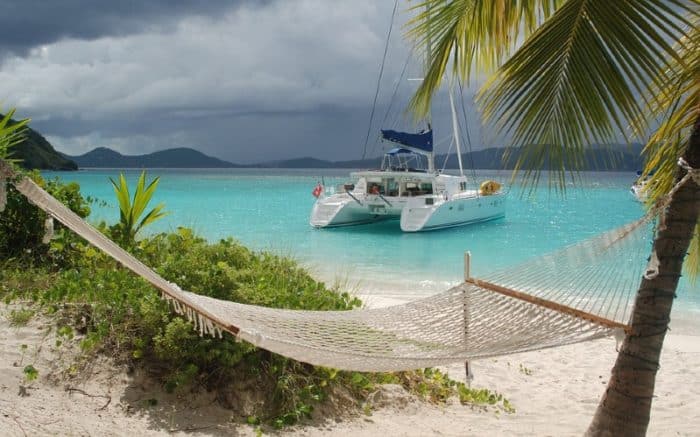
There are three main hull types that you’ll find in sailboats.
- Monohull: This is what most people think of when they think of a sail boat or any boat at all, really. A monohull sailboat has a single hulled structure that gives a boat that traditional boat shape we all instantly recognize. These are far and away the most common hull type for sailboats because they’re some of the oldest, they’re cheaper to produce, and they are fairly easy to maintain compared to the other options. You can do a lot more with the rigger in monohull sailboats and any sailing vessel with multiple masts is invariably going to be a monohull one. The downside of the monohull compared to the others is that they lack the stability.
- Catamaran: The second hull type you’ll find in sailboats is the catamaran . While technically a multihull vessel, they feature two hulls that are located on either side of the boat connected by a deck. Because it’s just the two, they get called catamarans rather than multihull which generally refers to three. Catamarans had been used by ancient peoples for years but never really caught on with “modern” boating for quite a long time. Now that we have fiberglass hulls and other advances, catamarans are much more commonplace than they were a hundred years ago. Catamarans offer great speed and stability but don’t have as much cabin space as a monohull.
- Trimaran/Multihull : This hull style features three hulls in a similar style to the catamaran with the addition of that third center hull. From the side you wouldn’t be able to tell a catamarans from trimaran sailboats. These boats are even faster and more stable than a catamaran and, by extension, a monohull. They have a very low center of gravity and a large beam. Space is still a drawback but the third hull increases room overall. There are also vessels with even more hulls, but they are exceedingly rare and also pretty expensive.
Sailboat Keel Types
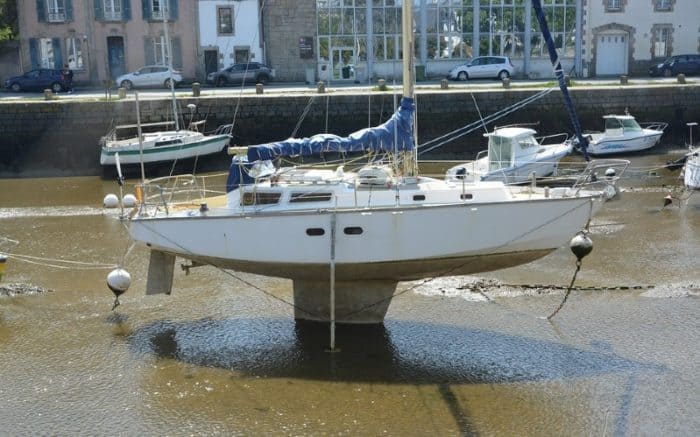
Heading below the hull now and we’ll find the keel, which is what gives your sailboat added stability in the water. While multihull boats find stability in the additional hulls, a monohull boat will get stability from its keel. Though it’s nearly impossible to flip or capsize a trimaran, if it does happen it’s staying flipped or capsized. However, the keel on a monohull boat makes it even harder to flip because of the physics of resistance in the water. That isn’t to say a monohulled boat with a keel is unsinkable, quite the opposite, but you’re just not going to flip one upside down without a real fight. There are six main keel types you’ll find in sailboats.
- Bilge Keel: These are dual keels that can be like fin keels or even full keels extending the length of the vessel. They extend from the sides and can prevent the boat from rolling. They need to be symmetrical on both sides of the boat to work.
- Bulb Kee l: These are a kind of fin keel but they carry ballast in them. That allows them to have a little more stability. They operate like a hydrofoil
- Centerboard Keel: This type of keel actually pivots and can be changed depending on the depth of the water.
- Daggerboard Keel : Another kind of centerboard keel but the daggerboard can actually be pulled up into the hull. This allows you to alter its position for an increase or decrease in speed or stability as needed.
- Fin Kee l: If you’re into racing you’ll probably have a fin keel. They are thin but extend deep below the sailboat. This makes them great for speed but not really ideal for a comfortable ride. You wouldn’t want to be day sailing for fun and relaxation with a fin keel.
- Full Keel: This is the most common type of keel and it spans the entire length of the vessel. There will likely be a rudder built into the keel as well.
- Wing Keel : This is a variant on the fin keel. Wing keels have a small wing at the tip to allow better directional stability by reducing cross flow.
Sailboat Mast Configuration
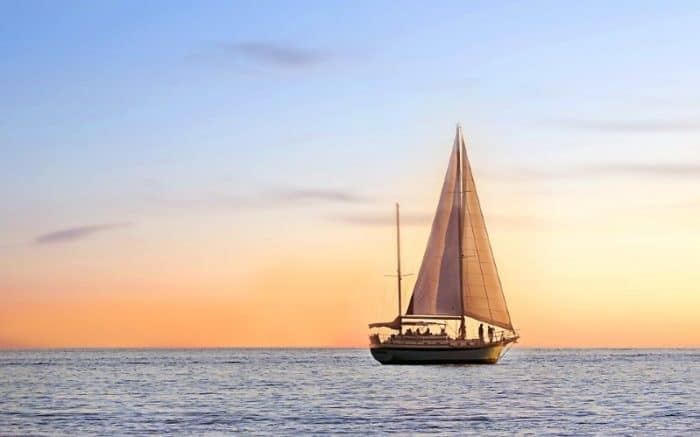
The mast of the sailboat is obviously that large pole onto which sails are rigged. Depending on your boat type you may have one mast, two masts, or more masts. How these masts are configured is where you can start distinguishing sailboat types you may recognize by name. These include:
Sloop: This is arguably the most popular type of sailboat mast type. A sloop has a single mast and two sails – the headsail and the mainsail. Being a single masted sailboat makes them easy to identify. These are probably the easiest to learn how to rig and how to sail. It’s versatile enough for cruising and for racing. Commonly these a gaff rig or a Bermuda rig. Another kind of sloop rig is the fractional rig sloop in which you can find one of the sails below the top of the mast.
Schooner: These can have multiple masts, not just two. The largest sailing vessels you’re likely to see, either in the present or in images from history, were schooners. Giant ships with six masts each bearing over 10 sails were schooners. An important detail is that the first mast on a schooner will always be shorter than the others. They are usually gaff-rigged
Cutter: This type of sailboat is very similar to the sloop and has a centrally located mast supporting three sails. Two headsails, the second called a staysail, is what distinguishes it most easily from the sloop. The rigging makes a cutter a bit harder to manage than a sloop.
Ketch : A ketch is a lot like a schooner but the two masts are arranged differently. On a ketch, the main mast is taller than the aft mast which is called the mizzen mast. The mizzen sail naturally is on the mizzen mast with the mizzen mast positioned aft.
Catboat : Also called a cat, a catboat has a single mast and a large, single gaff sail. The boats are usually short, stout boats that aren’t built for speed or for open seas. Best to be used in coastal waters
Yawl: This vessel is nearly identical to the ketch with one main difference. In a yawl, the helm is forward of the mizzen mast, while that is not the case in a ketch.
Other Types of Sailboats
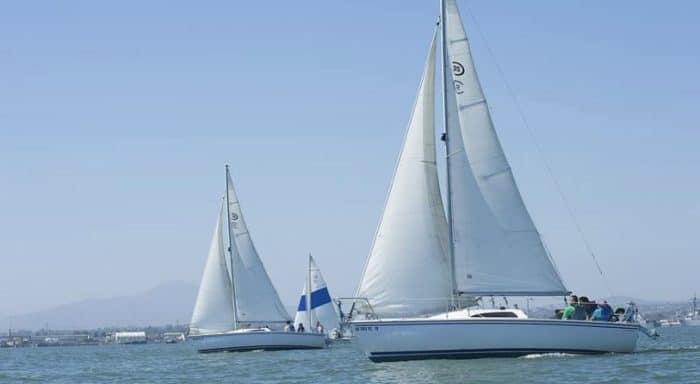
Now that we have the basic configurations out of the way, let’s look at some of the more specific types of sailboats you may find at sea. In some cases you’ll see that these terms are not entirely specific and one term may actually apply to multiple kinds of sail boats in much the same way that something like SUV can describe multiple different vehicles that are similar but not all the same.
Sailing Dinghies
Like any dinghy, a sailing dinghy is going to be a small vessel. Typically made to accommodate just one or two people, they are under 15 feet and the smallest of which are often used by children. Optimist dinghies are raced professionally and must meet certain requirements to be officially registered as true Optimist boats. If you’re totally new to sailing, a sailing dinghy might be a good place to learn the ropes.
Daysailer generally refers to any sailboat that is not intended to either race other boats or keep you out on the water for an overnight stay. As such, it can cover a lot of ground. Typically, a daysailer will probably be between 14 feet and 20 feet. Usually you won’t get more than 4 people on board and there will be room for storing gear but not a sleeping berth. These are great beginner sailboats.
Pocket Cruisers
Like a daysailer, a pocket cruiser is more of a general label for boats rather than a specific kind. In this case, any sailboat under 30 feet could technically be considered a pocket cruiser. Basically it should be trailerable and used for either cruising or racing. They may contain a small cabin or berth. They could be outfitted for long offshore trips.
Trailer Sailer
Very similar to a pocket cruiser, a trailer sailer is a smaller vessel but still larger than a sailing dinghy. There is clear overlap between trailer sailers, daysailers, and pocket cruisers and the same name could technically be used for many different boats. The defining characteristic of a trailer sailer is that it can easily be transported by trailer behind your tow vehicle. Unlike a sailing dinghy, a trailer sailer would likely have a retractable keep like a centerboard or daggerboard.
Racing Sailboats
These boats can be very large, anywhere from 20 feet to over 70 feet, and they are designed to be light and fast on the water. Larger racing sailboats required a skilled crew to operate. These have keels intended to increase speed and even laminate sales to improve performance. Smaller racing boats can be manned by just one or two people. They don’t offer a lot of creature comforts and aren’t meant for relaxing trips at sea.
Beach Catamarans
Beach cats get their name from the fact they’re designed to be beached and can be launched again from the beach if you so desire. They are usually under 25 feet and not meant for extending sailing offshore, rather they are designed for daysailing. They are very agile and fast and take a good foundation of knowledge to control properly.
Cruising Catamarans
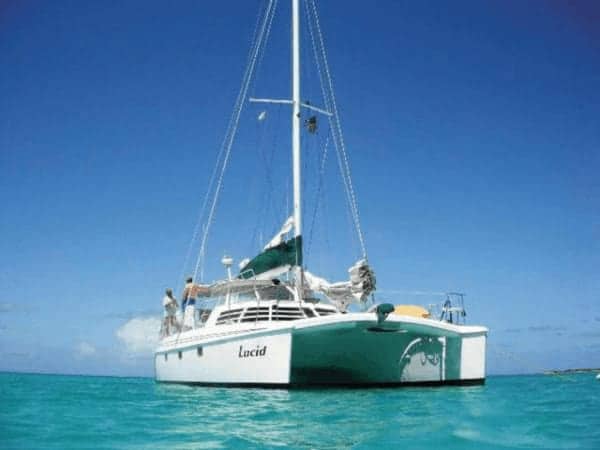
This is the larger style of catamaran designed for more serious boating. Like any catamaran they have a shallow draft but these can be between 25 feet and up to more than 50 feet. They’re designed for extended cruising offshore.
Cruising Sailboats
Boats like schooners quality as a cruising boat and they are typically at least 16 feet in length but may get well over 50 feet as well. Cruising sailboats include cabins for extended stays offshore and, if the boat is large enough, will likely have a fairly large living space below deck which includes a galley and a head in addition to sleeping berths. These are often called liveaboard sailboats .
Cruisers are often monohull but can just as easily be multihull. When properly outfitted they can be used for long, extended stays at sea that last weeks or more. Depending on rigging a cruising sailboat could easily be a sloop, a schooner, a cutter, a ketch or even a superyacht.
Racing Cruisers
This is essentially a hybrid of the cruising sailboat and the racing sailboat. It’s built for more speed than a cruiser but it will have better accommodations than a racing sailboat to allow for stays at sea. The end result is a lighter cruiser ideal for a few days at sea that can get some good speed.
Bluewater Cruising Boats
These are basically the next step up from a cruising sailboat. A bluewater cruiser is meant to sail across oceans, which is where the bluewater part of the name comes from. These are large sailboats and are best only sailed by skilled sailors. They can be outfitted for very long stays at sea and are able to handle rough weather better than smaller vessels.

Motorsailers
You don’t hear this term much anymore but it refers to a sailboat that also has an inboard motor so that they can travel under engine power or wind power. Typically these are larger vessels with accommodations below deck and designed for extended stays off shore. That said, because they mix both styles of boat, they fall somewhere short of either in terms of performance. The engine takes up space and adds weight, limiting your sailing abilities. Obviously traditional sailboats won’t include a motor.
The Bottom Line
There are a number of different kinds of sailboats and the easiest way to distinguish them is by comparing hull types, sail and mast configuration, and keels. Many terms you hear to describe sailboats can describe more than one kind, while others are very specific and the boat must meet certain requirements to merit the name. The only thing that truly unites every type of sailboat is the fact it must be powered by the wind, and even then there are hybrid versions that use motor power sometimes.
Learning the rigging of the different types of sailboats, including things like gaff rigs, standard rigging, and other rig types can be hard work and time consuming as some of these sailing boat rig types are far more complex than others.
My grandfather first took me fishing when I was too young to actually hold up a rod on my own. As an avid camper, hiker, and nature enthusiast I'm always looking for a new adventure.
Categories : Boats
Leave a Reply Cancel reply
Your email address will not be published. Required fields are marked *
Save my name, email, and website in this browser for the next time I comment.
More in Boats
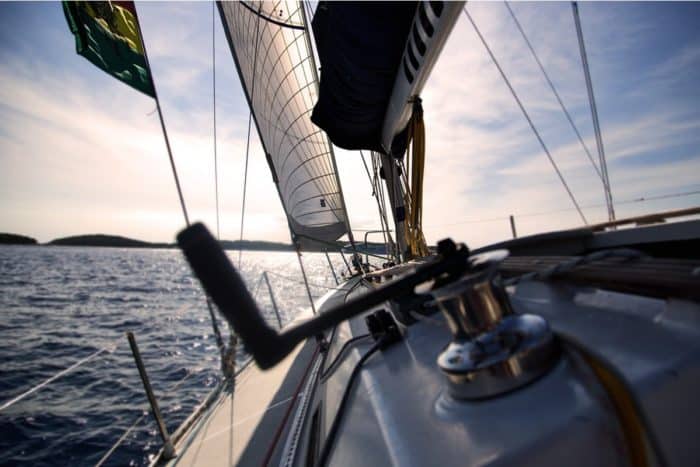
What Is A Gunwale?
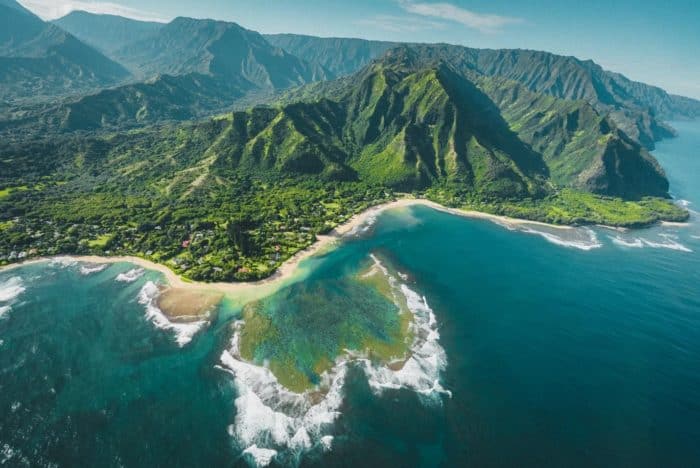
131 of the Best Hawaiian Boat Names
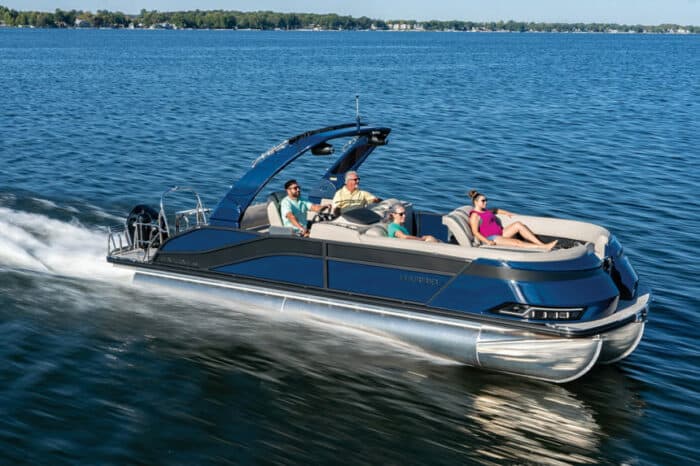
167 Patriotic Boat Names
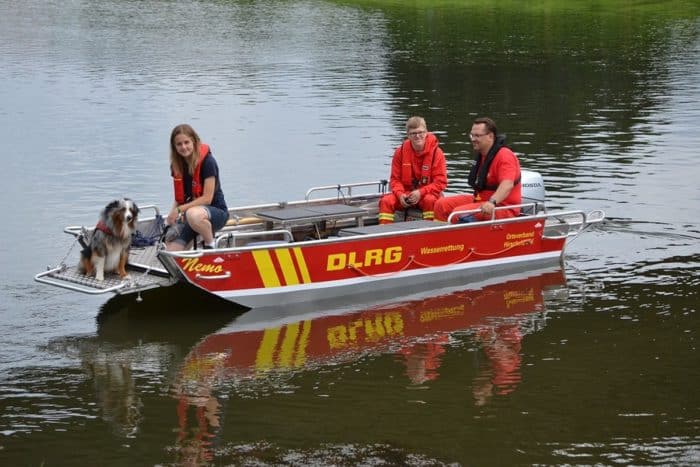
The 138 Best Boat Names for Dog Lovers

The People’s Poncho Review and Ratings
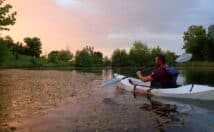
Oru Lake Kayak Review
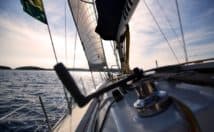
About Boatsafe
Established in 1998, BoatSafe is your independent guide into the world of boating, fishing, and watersports. We provide expert insights and detailed guides to help you find products tailored to your needs and budget.
Contact Boatsafe
- Address: 4021 West Walnut Street. Rogers, AR 72756
- Phone: (479)339-4795
- Email: [email protected]
Site Navigation
- How We Test
- Corrections Policy
- Privacy Policy
- Terms & Conditions
- Editorial Policy
- Affiliate Disclosure
Our Reviews
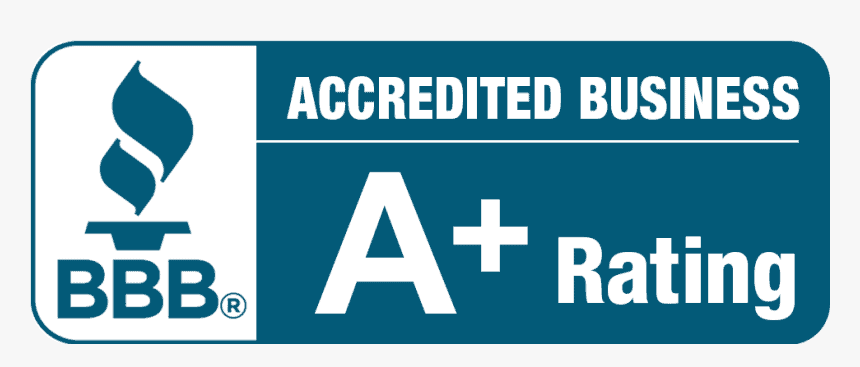
All content is © Copyright 2024. All rights reserved.

IMAGES
VIDEO